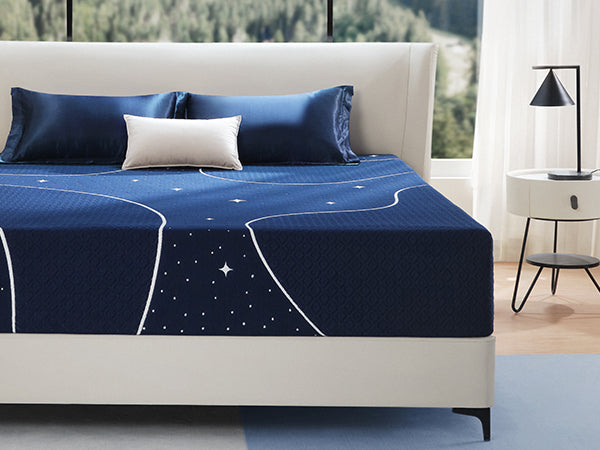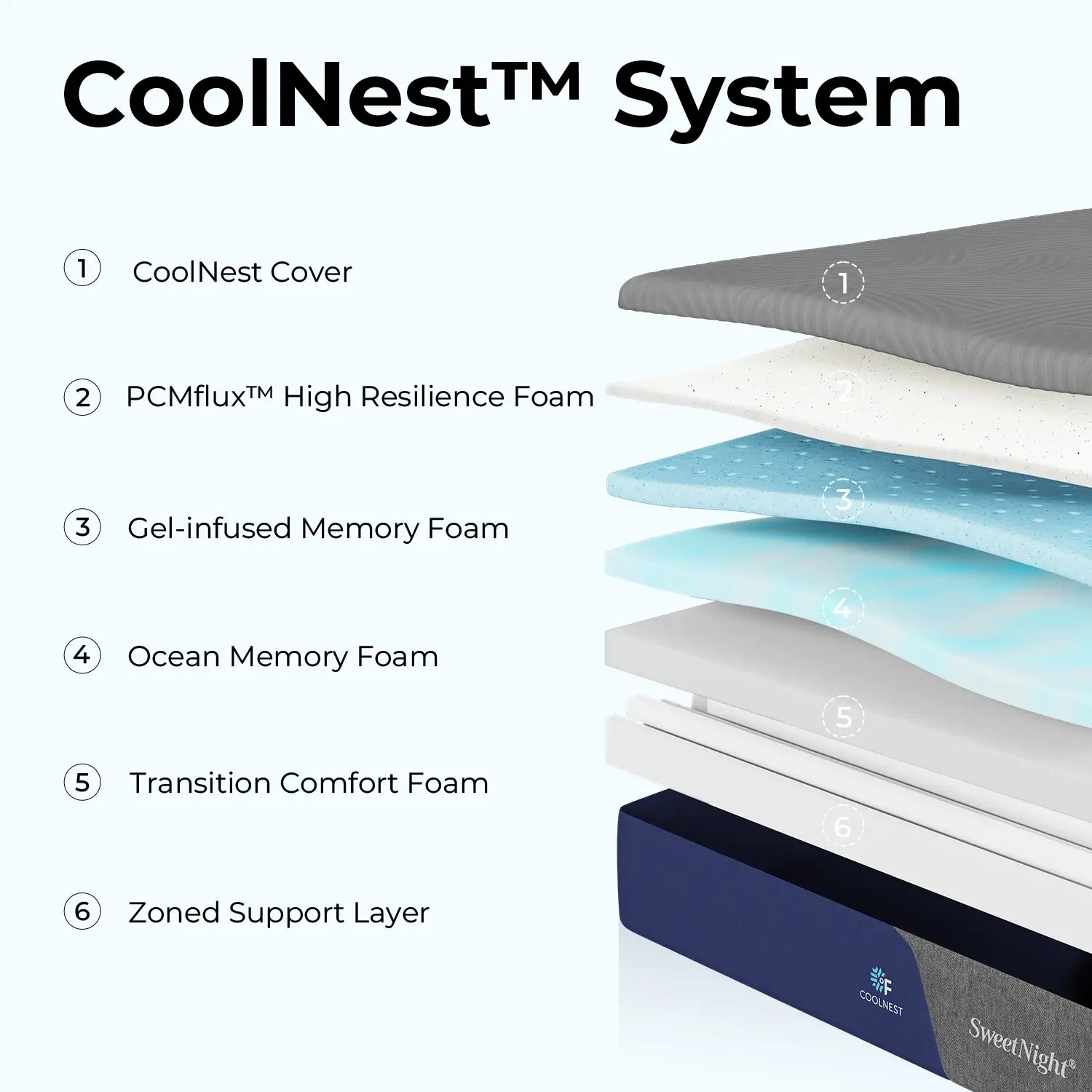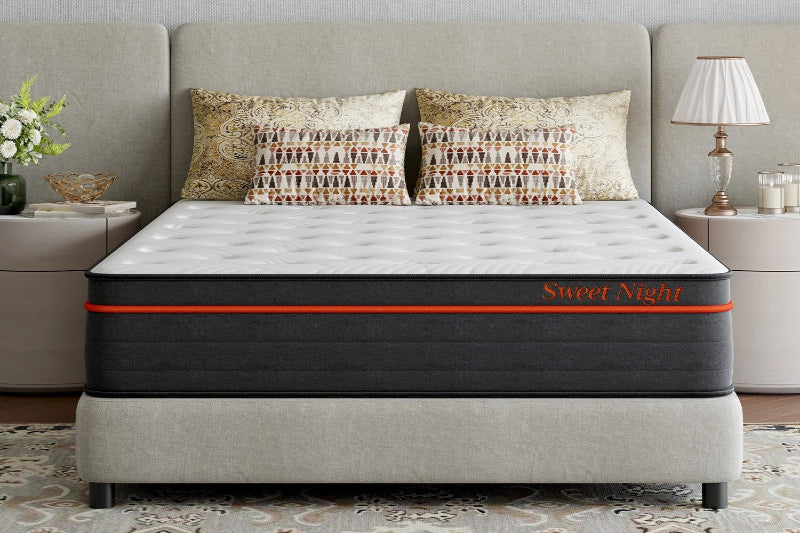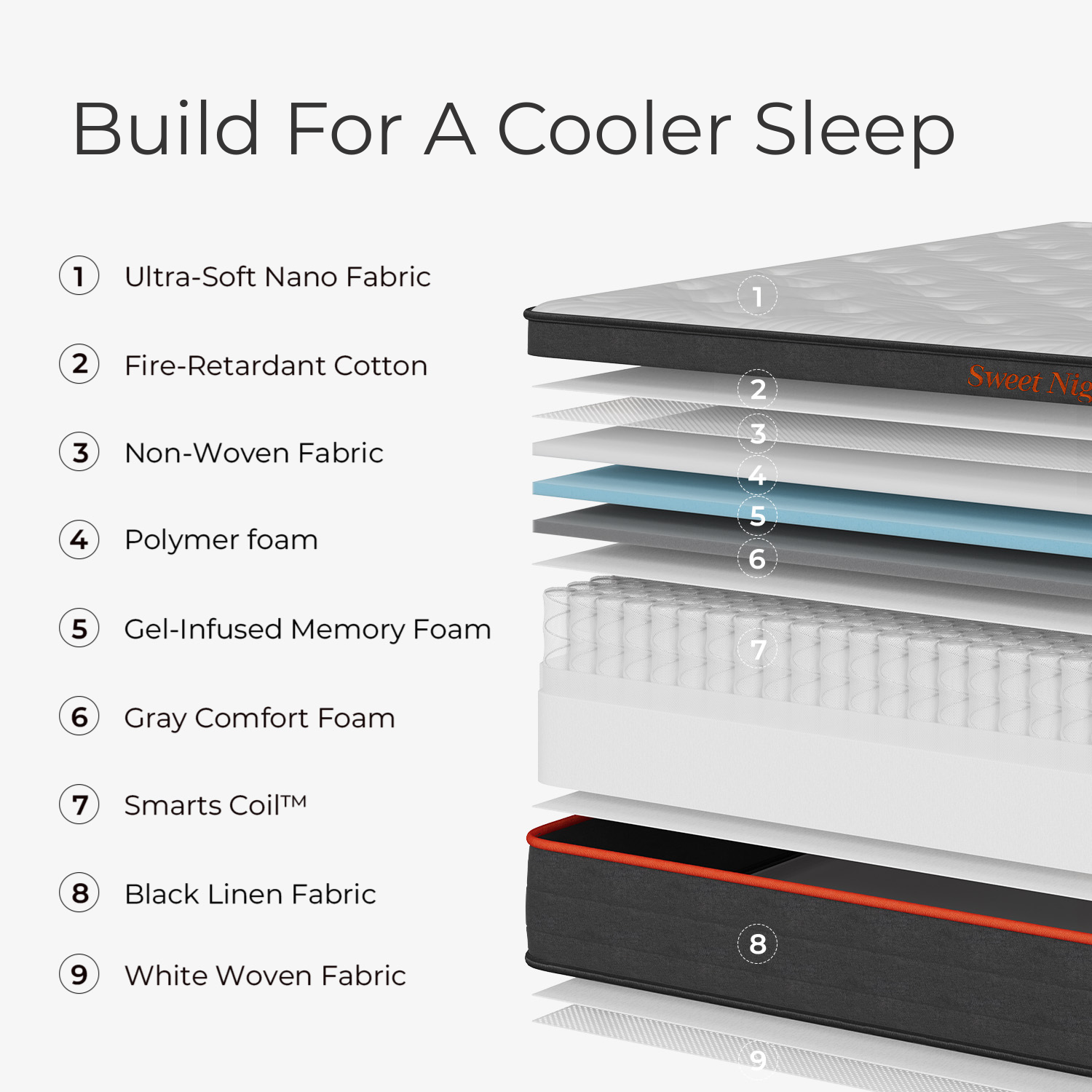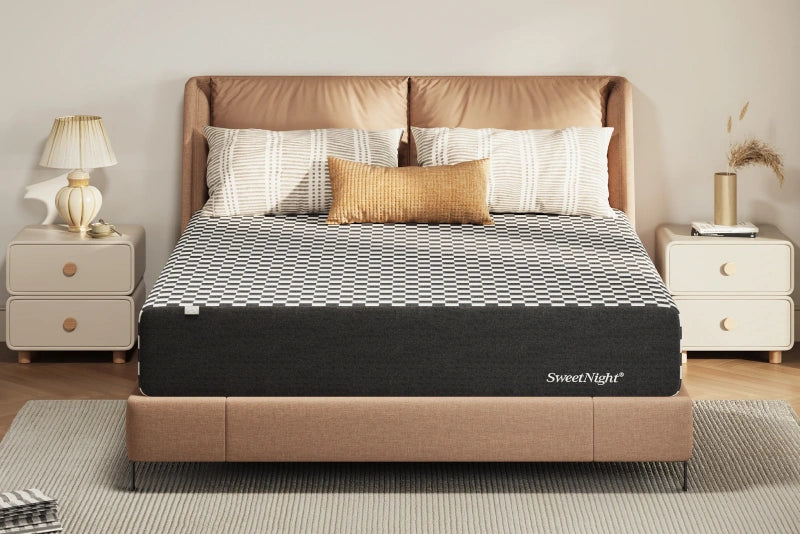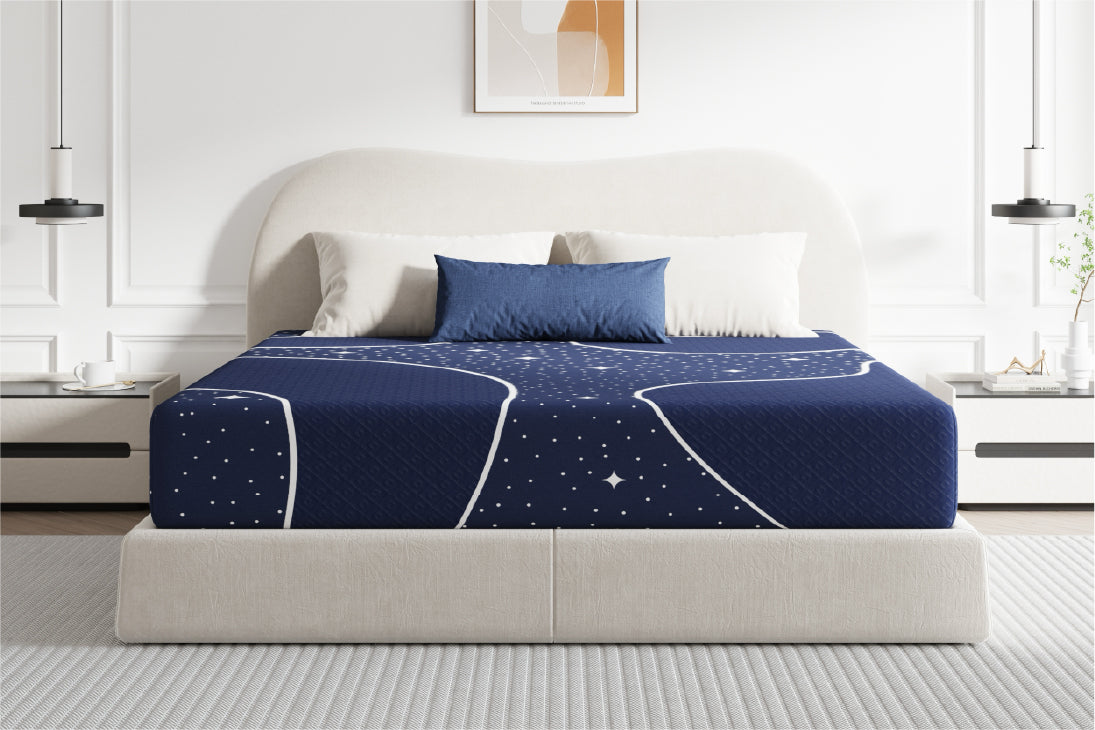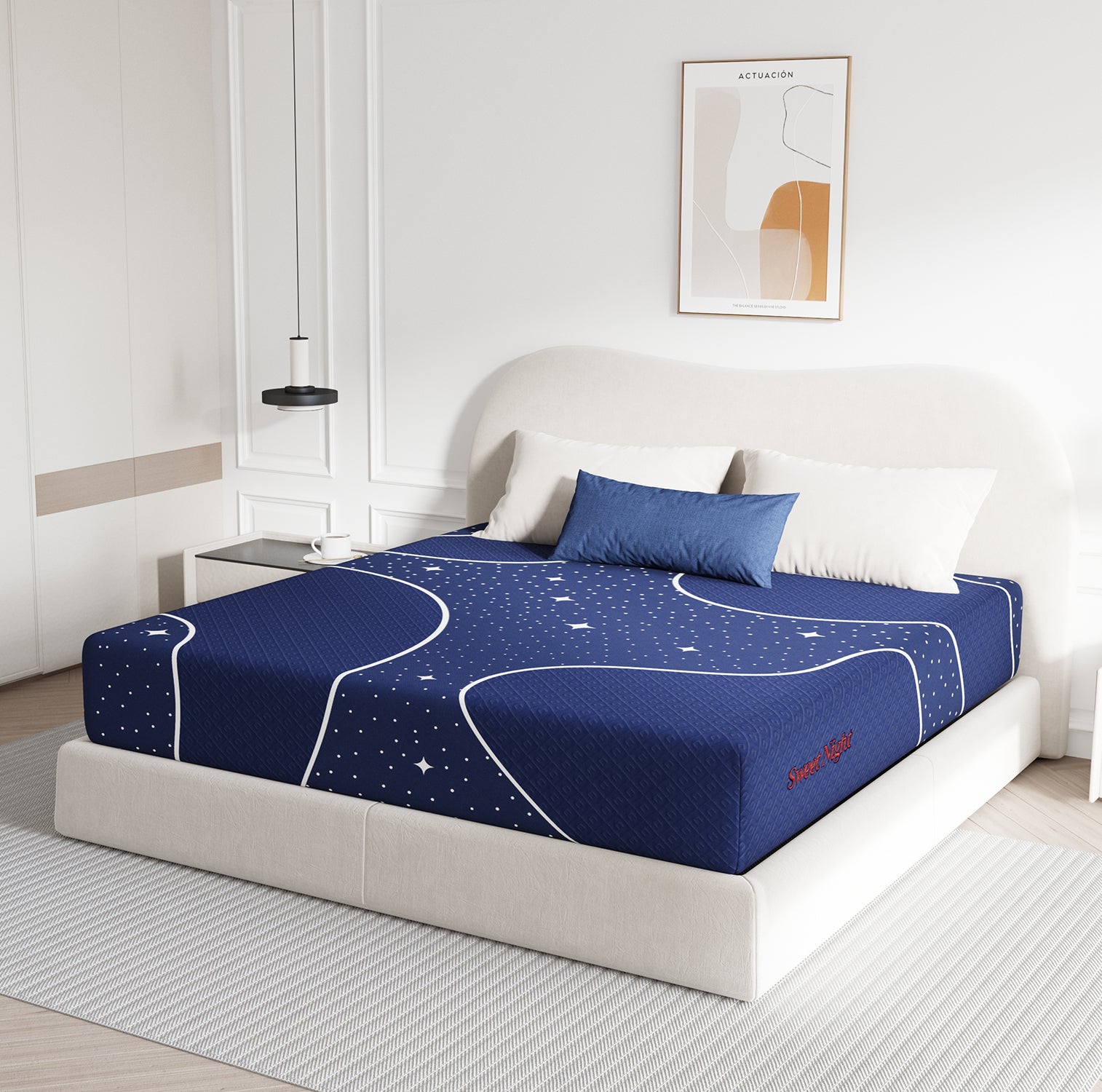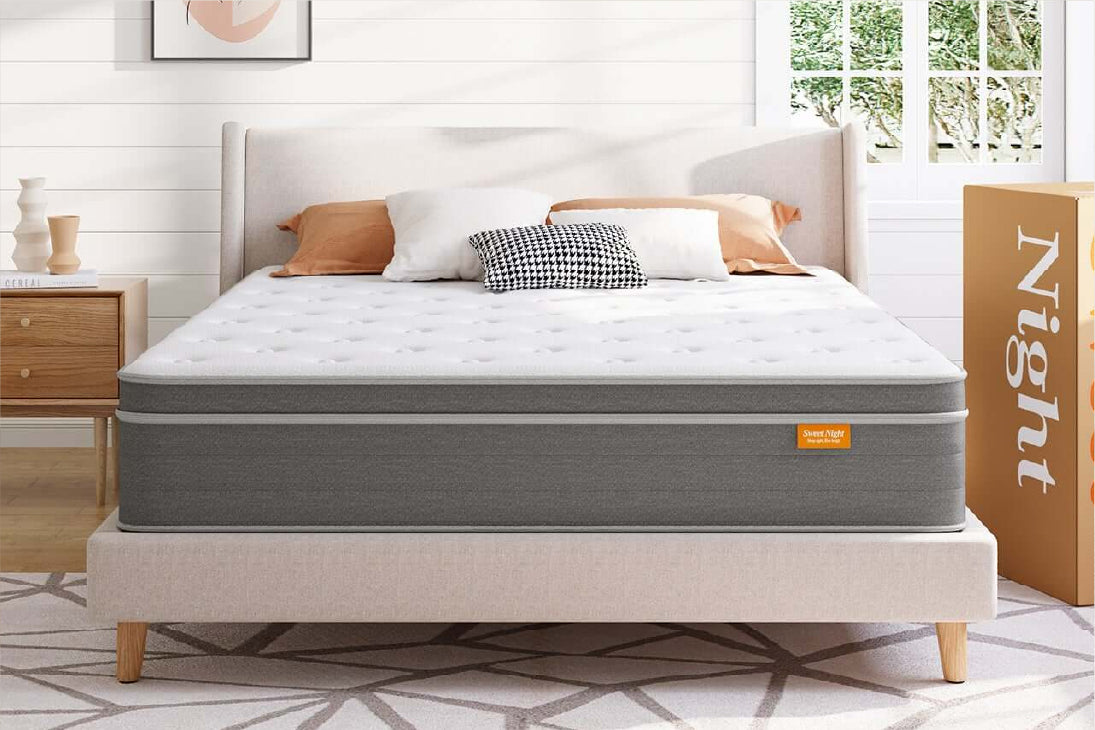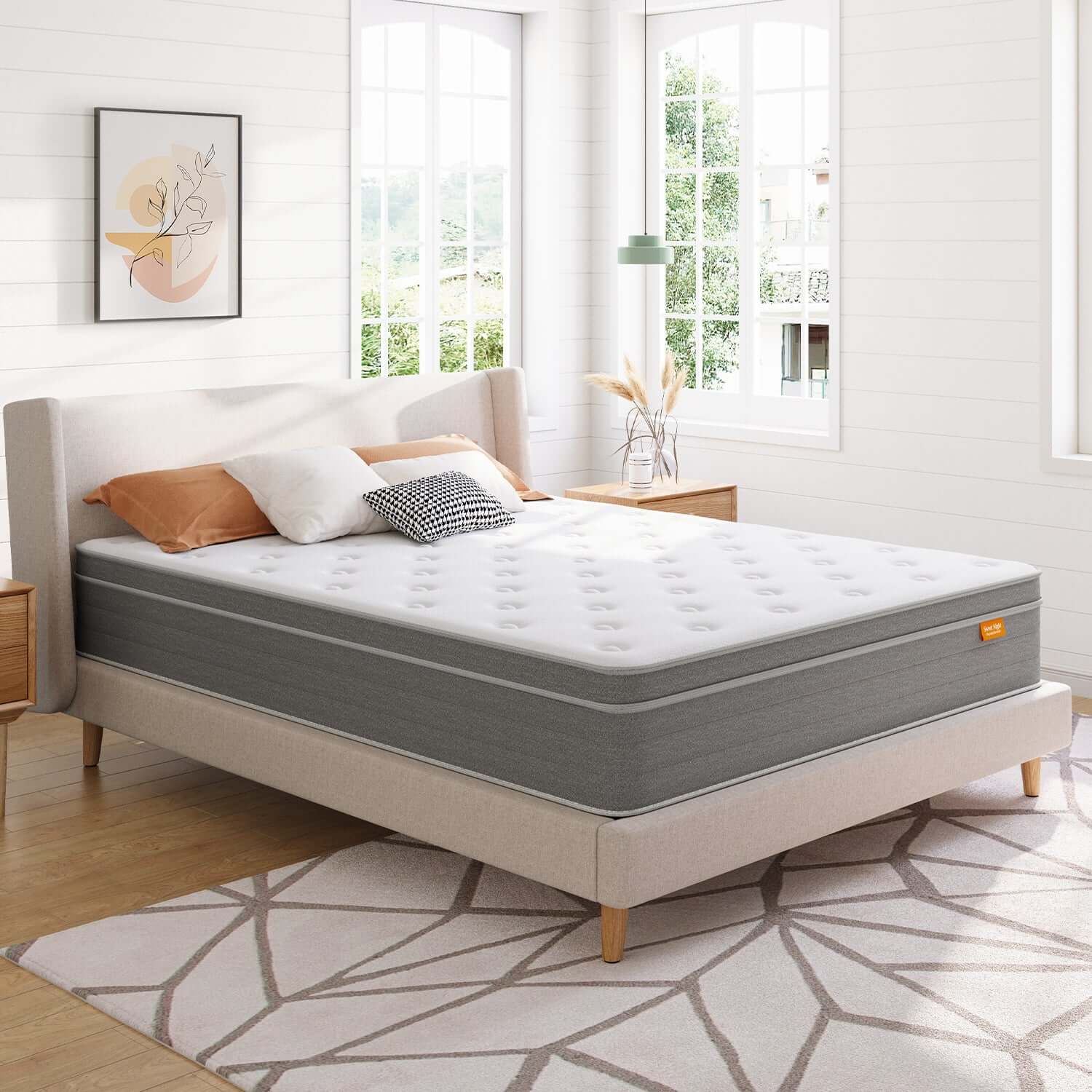If you're constantly tired, your back hurts every morning, and you can't remember the last time you actually felt rested, it's time to look at what you're sleeping on. The best mattress for sleeping should work with your body, not against it—keeping you cool, supporting your spine, and letting you wake up without feeling like garbage. Side sleepers especially need the right setup to avoid that stiff, achy feeling that kills your whole morning. Getting the best mattress for comfort isn't being picky—it's taking care of the one thing that affects literally everything else you do.
Why Your Mattress Matters More Than You Think
Your mattress directly affects how well you perform at work, but most people don't make the connection. You spend eight hours a night on it, and those hours determine whether you wake up sharp or exhausted. A good mattress isn't a luxury—it's essential if you want to function well during the day.
- Sleep Quality Controls Your Brain Function: The right mattress lets your body go through proper sleep cycles. Deep sleep is when your brain processes information and clears mental clutter. An uncomfortable mattress prevents deep sleep, so you end up forgetting things and making more mistakes at work.
- Bad Mattresses Create Physical Problems: Poor mattresses create pressure points that make you toss and turn all night. Your spine gets misaligned, especially if you're a side sleeper. You develop chronic pain and feel tired no matter how long you sleep.
- High Performers Take Sleep Seriously: Successful people know their mattress affects their performance. Good sleep means better decisions and enough energy to handle challenges. The best mattress for sleeping gives you consistent rest that adds up over time—better health, sharper thinking, and more productivity.
How Poor Sleep Destroys Your Career Performance
Bad sleep from a poor mattress shows up at work fast. Your thinking gets slower, your body aches, and everything feels harder than it should. Here's what actually happens when you're running on terrible sleep.
Brain Fog and Decision-Making Problems
Poor sleep messes with your brain's ability to think clearly and make good choices. Your prefrontal cortex—the part that handles logic and planning—stops working right when you don't get enough deep sleep. You take longer to understand things, miss obvious details, and struggle with problems that are normally easy.
What you'll notice:
- Zoning out during meetings or conversations
- Rereading emails multiple times to understand them
- Forgetting what people told you yesterday
- Making riskier choices without thinking through consequences
- Slower reaction times in any situation requiring quick thinking
The mental exhaustion piles up every day, making it harder to focus or come up with solutions.
Physical Pain That Kills Productivity
The wrong mattress creates real pain that sticks with you all day at work. Back pain from bad support makes sitting at your desk miserable. Neck and shoulder tension distracts you constantly. Side sleepers without proper cushioning wake up with hip and shoulder pain that won't quit.
How pain affects your workday:
- Can't sit comfortably for long periods
- Moving slower and taking more breaks
- Avoiding any physical tasks
- Calling in sick more often because your body can't recover
The best mattress for back pain and side sleepers stops this cycle. When you're not dealing with constant aches, you can actually focus on getting things done.

Best Mattress for Back Pain and Side Sleepers
If you wake up with a stiff back or achy shoulders every morning, your mattress isn't giving you the support your body needs. Side sleepers face unique challenges because this position puts extra pressure on specific areas—mainly your hips and shoulders. Without proper support, your spine falls out of alignment all night, which leads to chronic pain that ruins your entire day at work.
Here's what your body actually needs when you sleep on your side:
| Support Need | What It Does | What Happens Without It |
| Pressure Point Cushioning | Your hips and shoulders need enough give to sink in slightly and relieve joint pressure | Too firm = you wake up sore; too soft = your spine curves unnaturally |
| Spinal Alignment | Keeps your spine in a straight, neutral line from neck to tailbone | Gap at your waist causes lower back strain and pain |
| Body Contouring | Follows your body's natural shape with continuous support | Uneven support creates pressure points and forces awkward positions |
| High-Density Foam | Maintains its shape night after night without sagging | Worn-out areas lose support where you need it most |
Getting the right support means waking up without stiffness and being able to function normally instead of dealing with constant aches that slow you down all day. Back pain from poor mattress support limits what you can do at work—you move slower, struggle to stay comfortable at your desk, and avoid physical tasks.
The Prime Memory Foam Mattress uses Contouring Curve™ technology specifically engineered for back pain relief in side and back sleepers. Its flippable design with four different firmness levels means you can find the exact support your body needs without gambling on the wrong choice.
Best Cooling Mattress for Side Sleepers
When you're too hot, your body can't reach the deep sleep stages it needs for recovery. You end up tossing and turning, waking up throughout the night, and feeling exhausted even after eight hours in bed. For side sleepers who already need specific pressure relief, adding heat problems makes everything worse.
Your body temperature naturally drops when you fall asleep—it's part of how your brain signals it's time to rest. Here's why temperature control matters so much for quality sleep:
1. Heat Disrupts Your Sleep
Your body needs a cooler temperature to stay in deep sleep, which is when your brain does critical work like processing information and consolidating memories. When heat gets trapped, you start sweating, which interrupts your sleep cycles. Without enough deep sleep, you wake up foggy and tired no matter how long you were in bed.
2. Side Sleepers Get Hotter
Traditional memory foam doesn't let much air flow through, and side sleepers have more body contact with the mattress than back sleepers. Heat gets trapped between you and the foam with nowhere to go. The same contouring that makes memory foam comfortable also makes it sleep hotter.
3. What Actually Keeps You Cool
Modern mattress covers use 3D weaving to create thousands of tiny air channels that let heat escape. Advanced foam with hollow structures is three times more breathable than regular foam. Phase change materials (PCM) absorb heat when you get warm and release it when you cool down. Gel-infused memory foam pulls heat away from your body while still providing pressure relief.
If you're a side sleeper who runs hot at night, look for a mattress with multiple cooling technologies working together. The SweetNight CoolNest™ Mattress combines a breathable cover with 10,000 micro-vents, PCMflux™ foam that's 3X more breathable, and gel-infused layers to keep you up to 8° cooler. The 5-zone support system also gives you the pressure relief your hips and shoulders need without sacrificing airflow.
Best Mattress for Comfort and Career Success
A truly comfortable mattress supports your body properly, keeps you at the right temperature, and doesn't disturb you when you shift positions. When all these elements work together, you sleep deeper and wake up with the energy and mental clarity you need to perform well.
To find the right mattress, figure out what your body needs to sleep well:
| Comfort Feature | How It Helps Your Sleep | Impact on Work Performance |
| Zoned Support | Different firmness levels for shoulders, lumbar, and hips keep your spine aligned | Prevents lower back pain that makes sitting at your desk miserable |
| Gel-Infused Foam | Handles pressure relief while regulating temperature | No more waking up hot and uncomfortable or dealing with stiff joints |
| Motion Isolation | Partner's movements don't wake you up | Complete full sleep cycles for better focus and energy |
| Responsive Materials | Quick response when you move, no "stuck" feeling | Better sleep quality means sharper thinking and decision-making |
| Breathable Cover | Soft-to-touch fabric that promotes airflow | Stay comfortable all night for consistent, restorative rest |
Why Hybrid Designs Work Well:
- Balance of Support and Comfort - Memory foam combined with individually pocketed coils gives you the best of both worlds. The coils provide bounce and responsiveness so you don't feel stuck, while the foam layers handle pressure relief and contouring to your body.
- Works for Different Sleep Styles - This combination is great for people who change positions a lot during the night. Each coil moves independently, so the mattress adapts as you move instead of forcing you into one position.
- Good for Couples - If you and your partner have totally different ideas about what feels comfortable, hybrid designs often hit that middle ground where both people can sleep well.
The Island Hybrid Mattress combines three-zoned support with gel-infused memory foam and individually pocketed coils to deliver personalized comfort for all sleep positions. Its enhanced lumbar region targets lower back relief while excellent motion isolation ensures undisturbed sleep—giving you the complete comfort package that translates to better performance at work.

What Makes a Mattress Good for Your Career
A mattress that supports your career performance optimizes your sleep so you wake up with energy, focus, and no pain. Here's what actually makes a difference:
1. Multi-Zone Support System
Look for 3-5 zones of targeted support. Three-zone systems cover shoulders, lumbar, and hips. Five-zone systems provide head-to-toe support. You get softer cushioning at pressure points and firmer support at your waist and lower back. Good lumbar support prevents back pain that makes desk work miserable.
2. Advanced Cooling Technology
Look for breathable covers with 3D weaving (35% more breathable than standard), gel-infused memory foam that dissipates heat, and advanced foam with hollow structures (3X more airflow). Phase change materials absorb heat when you're warm and release it when you cool down. Staying 5-8° cooler makes a real difference.
3. Pressure Relief Layers
You need 2-3 inches of high-density memory foam (density 40-70) with transition comfort foam. Gel-infused foam keeps you cool and responsive. Transition foam prevents pressure buildup between soft and firm layers. Your joints won't ache in the morning.
4. Motion Isolation Technology
Essential if you share your bed. Individually pocketed coils absorb motion independently. High-quality memory foam reduces motion transfer. Poor isolation means getting woken up multiple times, which makes you foggy the next day.
5. Certifications That Matter
| Certification | What It Means |
| CertiPUR-US | Foam made without harmful chemicals, heavy metals, or formaldehyde |
| OEKO-TEX Standard 100 | Fabric tested for harmful substances that won't irritate skin |
| ACA Endorsement | Approved by American Chiropractic Association for spinal health |
6. Durability Features
High-density foam resists deformation and maintains its shape for years. Reinforced edge support prevents the mattress from collapsing when you sit on the side. Quality construction means the mattress stays supportive even after being compressed. Most good mattresses come with a 10-year warranty.
7. Trial Period and Warranty
A 100-night sleep trial gives you time to see if the mattress actually improves your sleep. Your body needs 3-4 weeks to adjust to a new mattress, so anything less than 90 nights isn't enough. A 10-year warranty protects your investment and shows the manufacturer expects it to last.
8. Hybrid vs. All-Foam Construction
Hybrid mattresses (foam plus pocketed coils) offer better bounce, edge support, and airflow—good for heavier people, combination sleepers, or couples. All-foam mattresses provide superior motion isolation and contouring—better for side sleepers with joint pain or lighter individuals. Consider your sleep style and body type when choosing.
Real Results from Better Sleep Quality
Better sleep from the right mattress creates measurable improvements in your work life. Here's what actually changes:
1. You Think Faster and Remember More
Your brain processes information faster and remembers details more easily. Instead of rereading emails three times, you understand them on the first pass. You solve problems quicker and come up with better solutions during meetings.
2. You Have Energy All Day Without Pain
You wake up without back pain or stiffness, so you can sit at your desk comfortably for hours. No more needing three cups of coffee just to feel functional by 10 AM. You have enough energy left after work to actually enjoy your life instead of collapsing on the couch.
3. You Handle Stress Better and Get Along With People
When you're well-rested, you handle stress better and don't snap at coworkers over small things. You communicate more clearly and build better relationships with your team. This leads to more opportunities, promotions, and career advancement that comes from being someone people want to work with.
Get the Best Mattress for Sleeping and Watch Your Performance Improve
If you're tired of waking up exhausted and achy, your mattress is probably the problem. The best mattress for back pain and side sleepers with cooling technology can completely transform your sleep quality and work performance. Stop dragging through your days because you're not getting real rest at night. Invest in the best mattress for comfort that supports your body and your career goals—you'll feel the difference immediately.
FAQs About the Best Mattress for Your Career
Q1: How long does it take to adjust to a new mattress?
Your body needs 3-4 weeks to adjust to a new mattress. Some minor stiffness during the first week is normal. If you're still uncomfortable after 30 days, the mattress isn't right for you.
Q2: What's the ideal mattress thickness for side sleepers?
Side sleepers need mattresses at least 10-14 inches thick. Thinner mattresses don't have enough cushioning to relieve pressure on your hips and shoulders. The extra thickness prevents you from bottoming out.
Q3: Can a mattress really affect my productivity at work?
Yes. Studies show people who sleep poorly make 20-30% more errors at work and take longer to complete tasks. Poor sleep from an uncomfortable mattress directly hurts your work performance.
Q4: How often should I replace my mattress?
Replace your mattress every 7-10 years depending on quality. Signs you need a new one include visible sagging, waking up with pain, or sleeping better in hotels than at home.
Q5: Should I get a softer or firmer mattress for back pain?
Medium-firm works best for most people with back pain. Side sleepers need slightly softer for pressure relief. Back sleepers need firmer support. If you're under 150 pounds, go softer. Over 200 pounds, go firmer.
Q6: Will a cooling mattress actually keep me from sweating at night?
Good cooling mattresses lower your sleep surface temperature by 5-8 degrees, which stops most heat-related sleep problems. They significantly reduce night sweats but might not eliminate them if you have medical conditions.
Q7: Is it worth paying more for a hybrid mattress over all-foam?
Depends on your needs. Hybrids offer better edge support, bounce, and cooling. Worth it if you're over 230 pounds, sleep with a partner, or want more responsiveness. All-foam works fine for solo sleepers under 200 pounds who need motion isolation.

